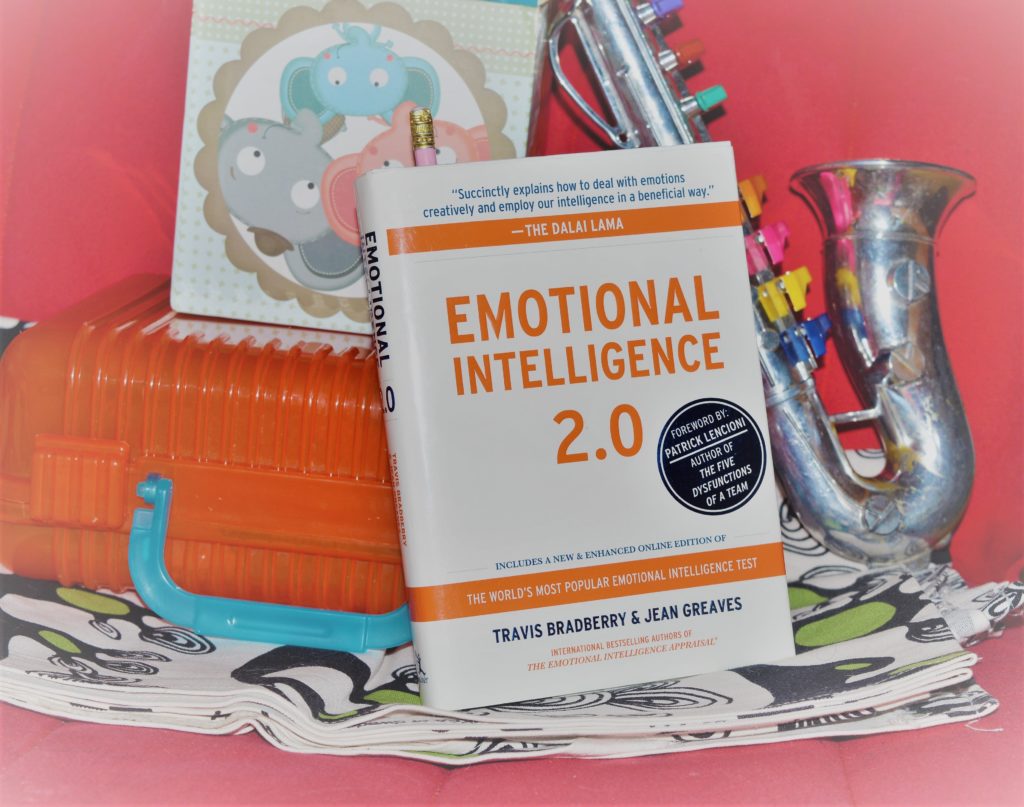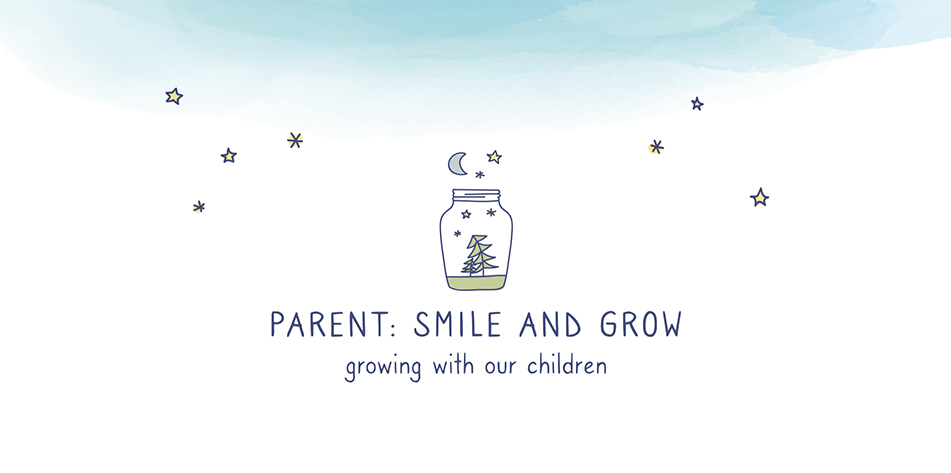Here we are for the first post on this series, devoted to the books and sources I’ve been finding useful. SO, “Emotional Intelligence 2.0” is for you if you’ve ever thought..
- that you have a hard time in understanding how you feel;
- you only recognize an emotion after some time and reflection;
- your friends’ reactions sometimes astonish you;
- and / or that you want to teach your children how to grow in touch with their emotional part, but don’t know where to start;
Then read along! If you’re interested, buy it or borrow it and let us know what you think!

Disclaimer : This post contains affiliate links, but it is not a sponsored post and all the opinions are my own.
Table of Contents
Emotional Intelligence 2.0 by Travis Bradberry and Jean Greaves – co-founders of TalentSmart®
You may wonder why I’ve chosen to start my series with a book that does not talk about children. In fact, I think children are not even mentioned.
Well, truth is, I’ve come to think that in order to improve the way we are with our children; in order to better understand our little wonders; in order to enjoy more the time we have together; we need to work on us FIRST.
(Ok, maybe at the same time, but… you get the point)!
This book, in my opinion, doesn’t present you anything magical, no miracles here… And maybe that’s what I like about it.
It does mix data, theory and practical advice and exercises to get a clear hold on what emotional intelligence is and why you should consider working on it.
What can you expect from this book
The style of this book is practical and entertaining. If you are the kind of person who needs A LOT of theory, then maybe this is not the best reading.
However, if you’re looking for down-to-earth strategies that you can easily implement in your daily life, you should give it a go. Its main purpose is getting us to switch our way of thinking and build a real strategy to increase our emotional intelligence.
The structure of this book is easy to go through, so I think what could work best is :
- reading the book from start to finish to grasp the main concepts;
- sneak at which areas you should work on first;
- take a note of which pieces of advice you are already putting into practice, and which one you want to start implementing;
- use then the book as a guide or referral to check regularly how you’re doing in your path towards being an emotionally intelligent person!
On the contents
Firstly, note that the book refers to an online test that you should take before you start reading it. I admit, I generally put a lot of hope into tests results. I feel like a teenager checking my personality appeal on magazines !
In this case, I was a little disappointed by the test structure. I felt it was a little too general, but I’m not an expert at all so this is pure personal impact. Its purposes appear more clearly as we read on. It’s then perfectly coherent with the book contents.
Inside the book you’ll also find an action plan to fill in, and many real-life exemples. They explain the impact of what is presented in typical daily situations.
Ready to start?
Chapter 1 : The Journey
The first chapter opens up with a real story. It captures our attention to make us sense why understanding emotions better is so important. It then unveils the authors mission (increase our “EQ”) and how they suggest us to use the book as a tool to achieve this purpose (our journey).
I really like the clear explanation it gives of how our brains work in terms of analyzing feelings :
- We sense something through our body;
- what we sense translates into electric signals and go through our body;
- these signals arrive to the brain through our spinal chord. They arrive first in the limbic part of our brain, and only then to our prefrontal cortex.
To summarize, when we feel something, it generates an emotion. Then we can analyze this emotion with our “rational” brain. The two brain parts communicate to each other and influence each other, and this interaction entails our emotional intelligence.
Chapter 2 : The Big Picture
Now we get to some general and theoretical information about Emotional Intelligence.
Emotional intelligence is your ability to recognize and understand emotions in yourself and others, and your ability to use this awareness to manage your behavior and relationships.
What I also find useful is a table of emotions : from the 5 main emotions (happiness, shame, anger, fear, sadness), and depending on the level of intensity, we obtain a list of precise emotions.
The main principle to retain in my opinion : we cannot choose our emotions. But, if we learn to understand them, and we become aware of which emotions we are feeling, then we can take better decisions when we act.
This is where this book gains its utility : we can exercise and improve our capacity to understand emotions. We are made up of three main elements : cognitive intelligence, personality and emotional intelligence. Only the latter can be changed (and improved)!
The authors try to motivate us by showing us the impact of EQ on people’s success. Success is here defined as job position and/or salary. Now, my personal motivator is more on the possibility to create connections and positively manage conflict. But. It can still be interesting data (and money doesn’t hurt anyways).
Chapter 3 : What Emotional Intelligence Looks Like : Understanding the Four Skills
What are the main components of emotional intelligence? They are described in this chapter, along with some real-life exemples of people excelling in them, and of people lacking them. (based on the EQ test score).
We have 4 skills belonging to 2 main competencies :
- Personal competence = self awareness and self-management.
- Social competence = social awareness and relationship management.
On Self awareness : it allows us to put the exact words on what goes on inside us. It also indicates that we know our tendencies over time. Which kind of event generates a strong emotion is us. We are then able to indicate what kind of event usually steer anger, or motivates us to act, etc.
On Self-management : we use what we know or our emotions to adapt our behavior according to the situation or the person in front of us.
On Social awareness : it leads us to understand other people’s emotions, even when they differ from ours. We gain on social awareness skill only if we learn to observe and listen. If you remember my post on attachment theory, you’ll know I find this super important for new parents. This is when you can silence your inner voice and switch the focus of your attention to the present moment; and to the person in front of you.
On relationship management : you are able to use all the above skills to manage your interactions in a positive way. This also means communicate in an effective way and, ultimately, manage conflict.
Chapter 4 : Digging In : An Action Plan to Increase Your EQ
It offers practical advice and tools to help us work on our abilities to empathize with ourselves and others.
We need to start introducing new paths of reactions, and gradually transform this new behavior into a habit. New neural connections will be formed in our brain by doing so, but we need to repeat the action over time for our brain to strengthen it instead of getting rid of it.
That’s where the idea of a real “action plan” may come in handy to stay focus. We can set goals and steps to achieve these goals; we can write and register what we do as we move on.
Chapter 5 : Self-Awareness Strategies
Here we may find a detail of 15 tips to work on, for detecting our own feelings and emotions. I’ve found them very useful as a starting point for deepening our reflections. They allow us to focus on specific aspects of how we usually function “automatically” in our minds.
To me, the main purpose here is to detect our “automatic mode” and to transform it into “manual” so to speak!
Chapter 6 : Self-Management Strategies
Detail of 17 ways to help us better make use of our emotions, once we’ve learned to identify them. These are very practical tips, and always a good reminder to read!
Chapter 7 : Social Awareness Strategies
Detail of 17 pieces of advice to improve in recognizing other people’s emotions. As in chapter 5, here the key is learning to observe. This time though, we focus on other people, so the advice is shaped to exercise our ability into switching perspectives.
Chapter 8 : Relationship Management Strategies
Other 17 ways to make sense of all the other three components of emotional intelligence and be capable of choosing how to handle our relationships. The suggested strategies are all new, but are originated from what we’ve already exercised in the previous chapter.
Epilogue
The last chapter is devoted to unveiling the new date reports on what has recently been discovered about emotional intelligence. For instance, the found links between EQ and gender, or EQ and job title, age, and also between EQ and country.
My view
To conclude, it gives a different perspective on why the authors consider it so important to “spread the word” and teach how to be emotionally intelligent.
This reading appears to me as a mixture of a manual and a self-help book. In its simplicity, the message is deep. It will not in itself change our lives or our minds. Nonetheless, it can guide us through practical every day step we can take to go in that direction.
Have you already read this book? Or do you have a related one to suggest? Write below!
